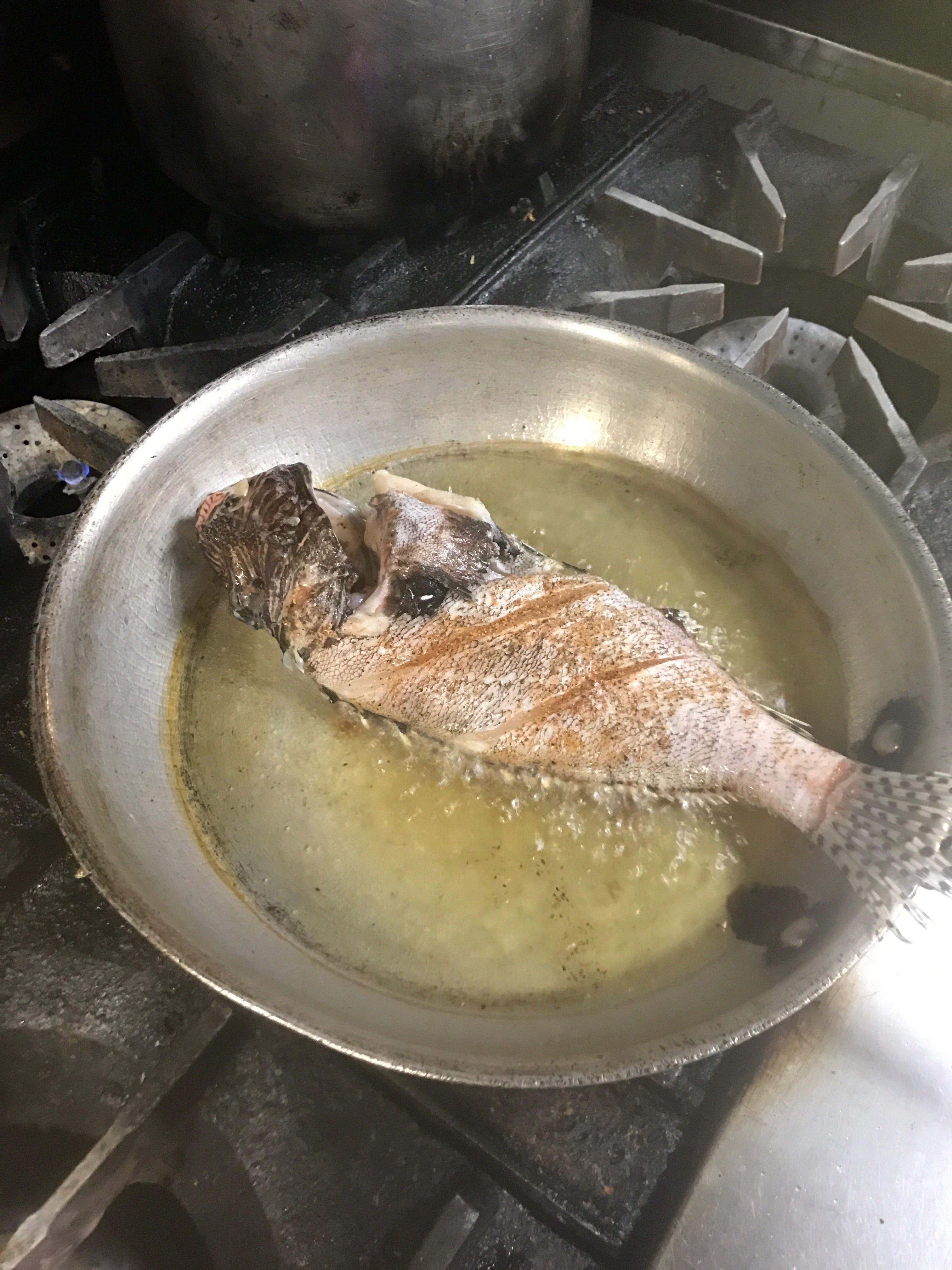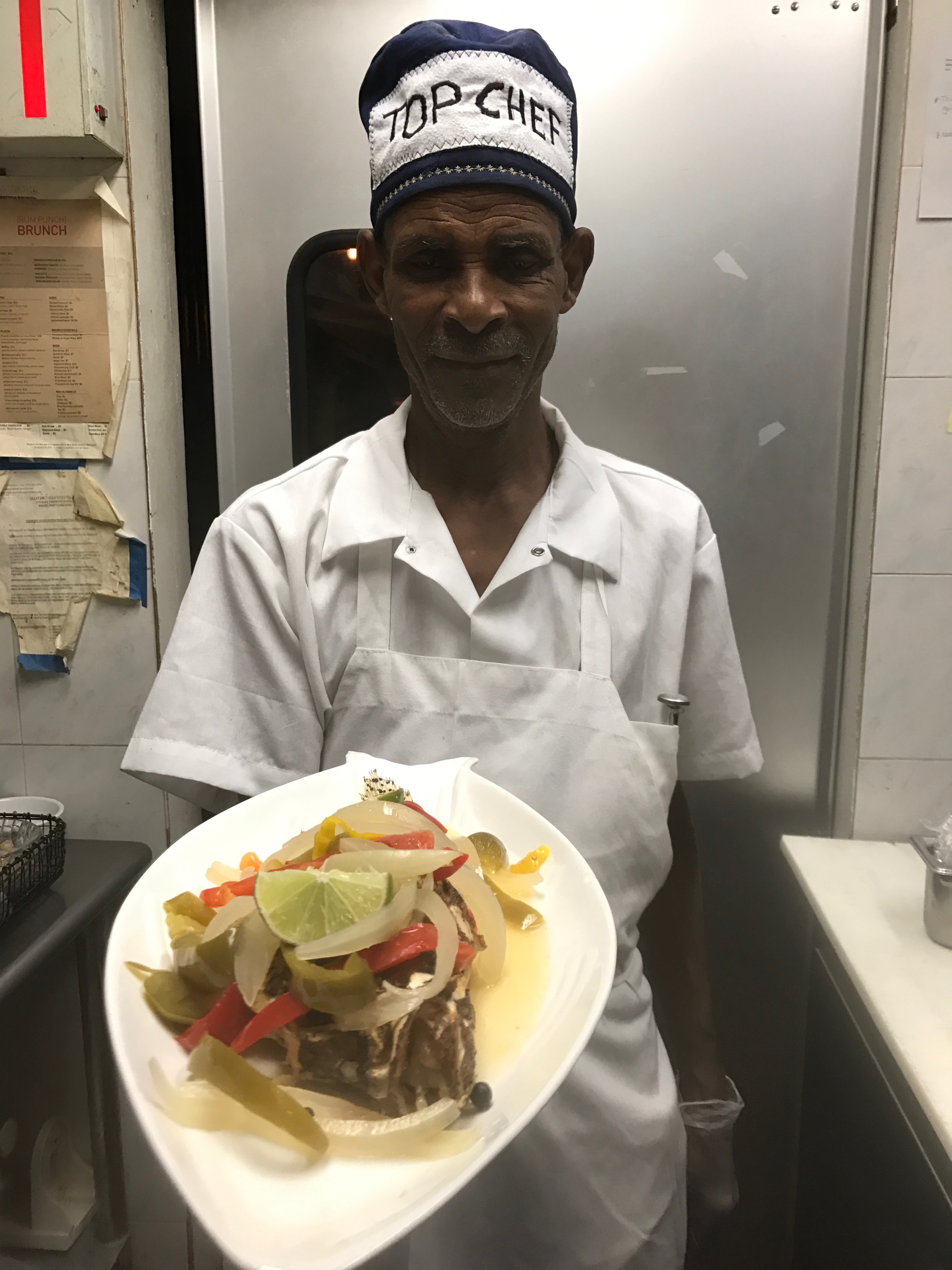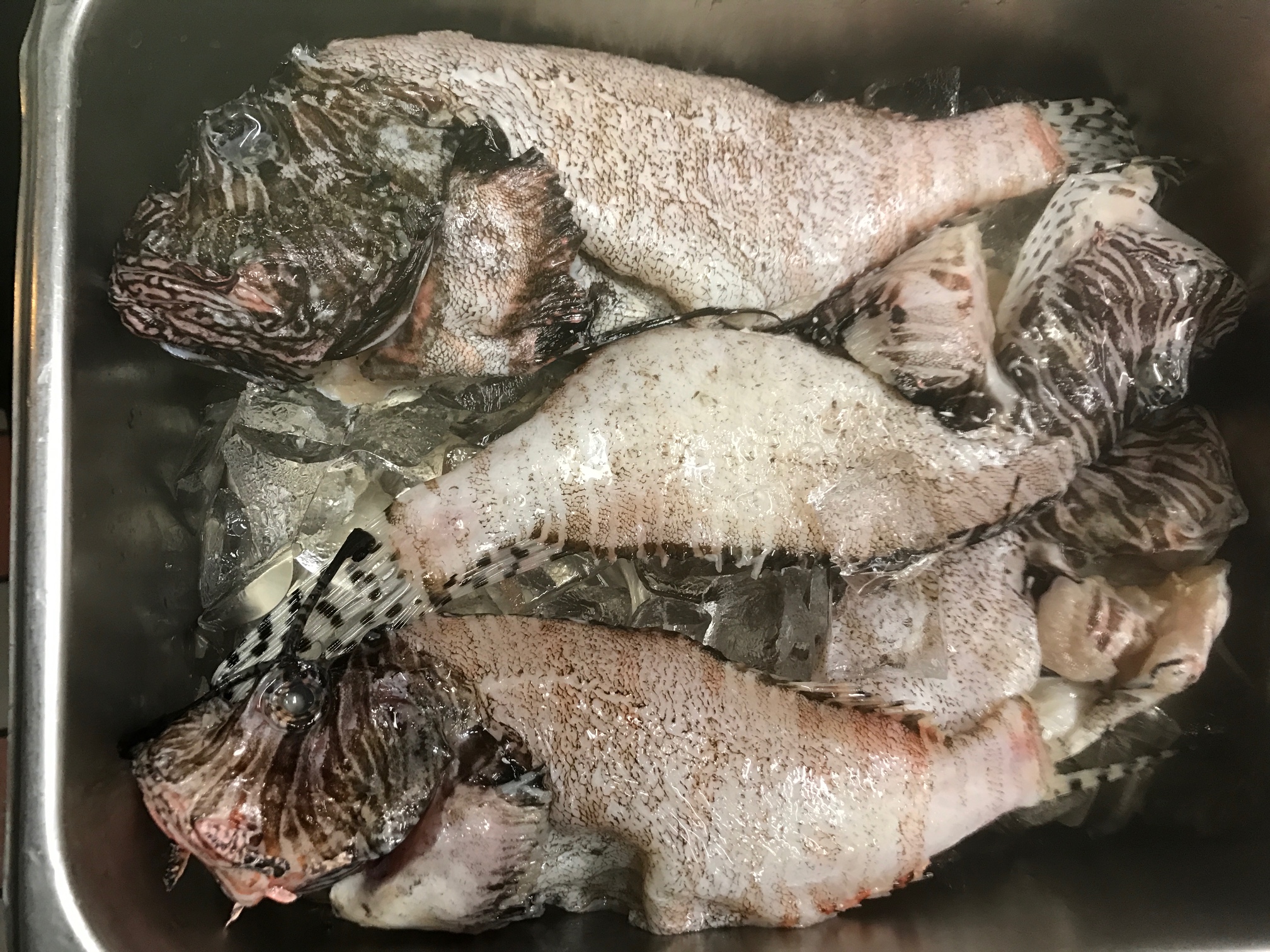Fighting an Invasive Species By Adding It to the Menu
4:30 minutes
Lionfish—a black and orange tropical fish with spiky venomous fins—are generally native to the Indo-Pacific. Thanks in part to human involvement, though, a population along the southern U.S coast and into the Caribbean has exploded over the past decade. Without any natural predators in this new environment, the lionfish are free to consume everything from smaller fish to competing fish’s young, devastating native populations.


In the wake of this ecological crisis, Florida conservationists have begun promoting the invasive species to restaurants, showing that they’re safe to eat if their venomous spines are removed (carefully). The campaign has made lionfish a popular dish in Florida and New York, albeit an expensive one. But the process to catch the lionfish is an inefficient and costly one—divers must catch them by hand and only in small numbers. Without a better way to catch the lionfish, the market cannot hope to outpace the growth in population.

Maia Mcguire joins us to discuss the good and the bad of getting the lionfish out of the water and onto your plate.
Maia McGuire is a Florida Sea Grant Extension Agent based in Bunnell, Florida.
IRA FLATOW: Now, it’s time to play Good Thing, Bad Thing.
[MUSIC PLAYING]
Because every story has a flip side.
[KITCHEN SOUNDS]
That sound you’re listening to, it’s a fish getting fried up by Chef Victor at Norman’s Cay, a Caribbean-style restaurant in downtown Manhattan. But this isn’t red snapper or sea bass. It’s a lionfish, you know, the kind you see in your aquarium sometimes. It’s black and orange, with those spiky venomous fins that cover it like a mane. Not your typical menu fare, I’m sure. I would say you’re more apt to see it in an aquarium in somebody’s apartment.
So how did this deadly fish end up on a dinner plate? For that, we turn to my next guest, Maia McGuire, Florida Sea Grant Extension Agent with the University of Florida. Maya, welcome to Science Friday.
MAIA MCGUIRE: It’s great to be here, Ira.
IRA FLATOW: So how can you find lionfish on the menu at select restaurants now? But there are many, many more of them, right, along the Southern Coast, Southeastern coast of the US. They’re taking over in some places.
MAIA MCGUIRE: Sadly, that’s true. They’re found throughout the greater Caribbean area, in the Gulf of Mexico, and all the way up the East Coast of the United States.
IRA FLATOW: So are they competing with other fish? Is that what makes them a danger for being there?
MAIA MCGUIRE: Yes, the big problem is they are carnivorous fish. And so they eat smaller fish and some crustaceans, things like a little shrimp. And the problem is, they’re eating the same food that our native fish would like to be eating. And they’re also eating the juveniles of our native predatory fish.
IRA FLATOW: So who finally said, you know, let’s get people to eat them? How did that start?
MAIA MCGUIRE: Yeah, I’m not sure who the individual was that first came up with that idea. I suspect it was several people probably simultaneously. As these fish started to become pretty abundant and everybody started wondering what can we do about them, the first question often is, can we eat them?
And so folks tried them. And they found that they’re actually a very tasty fish. It’s a mild white fish. And they take seasoning well. Chefs like working with them. So it kind of seemed like the perfect solution.
IRA FLATOW: So how do you go about collecting them? Because they’re not a schooling fish, right? You just can’t put a net out and grab a whole bunch of them.
MAIA MCGUIRE: Right, they are a challenge to catch. They like to be on reef areas or areas with structure. And they actually like being under ledges a lot of the time. So it’s not a great place to drag a net. They don’t really take a hook very well. So the primary method by which they’re caught is using divers, either armed with spear guns or with nets. So it’s a pretty labor intensive fishery.
IRA FLATOW: So that’s the bad thing about this. The good thing is that you can catch them and fry them up. And they taste good. The bad thing is that they’re hard to go out and catch.
MAIA MCGUIRE: That’s true.
IRA FLATOW: So it sounds like this isn’t the ultimate solution to curbing this invasive species.
MAIA MCGUIRE: Not until we can come up with a better way to catch the lionfish. There are folks in many different places right now trying to design a trap that might be specific for lionfish in hopes that we can use that in deep water, shallow water, all over the place. But of course, we don’t want to be catching all of our native fish in those traps while we’re trying to get a lionfish. So that’s the challenge.
IRA FLATOW: It’s sort of a good thing, bad thing in itself is that it’s good that we’re frying them up and eating them. But what if everybody likes them and wants more of them?
MAIA MCGUIRE: Well, at this point, the rate at which they’ve expanded throughout our area, we’re not too concerned about running out of lionfish. They have a very high reproductive rate. A single female lionfish can release up to two million eggs in a year. So I think we’d have to work really, really, really hard before we had to worry about running out of lionfish.
IRA FLATOW: That’s something we should all be worried about, yeah. All right, thank you, Dr. McGuire. Maia Maguire is Florida Sea Grant Extension Agent with the University of Florida. Have a good weekend.
MAIA MCGUIRE: Thanks. You, too.
IRA FLATOW: We’re going to take a break. And when we come back, it’s how do we recover from the stress of this election. And we’ll have a psychologist tell us her thoughts on how we can overcome it. So stay with us. We’ll be right back after this break.
Copyright © 2016 Science Friday Initiative. All rights reserved. Science Friday transcripts are produced on a tight deadline by 3Play Media. Fidelity to the original aired/published audio or video file might vary, and text might be updated or amended in the future. For the authoritative record of ScienceFriday’s programming, please visit the original aired/published recording. For terms of use and more information, visit our policies pages at http://www.sciencefriday.com/about/policies/
Katie Feather is a former SciFri producer and the proud mother of two cats, Charleigh and Sadie.